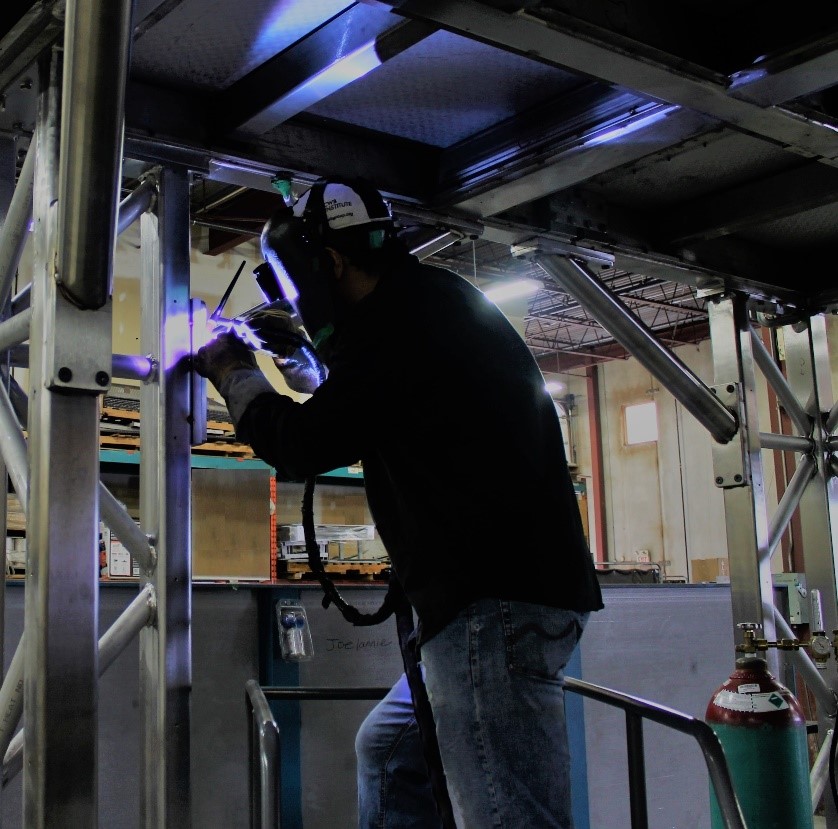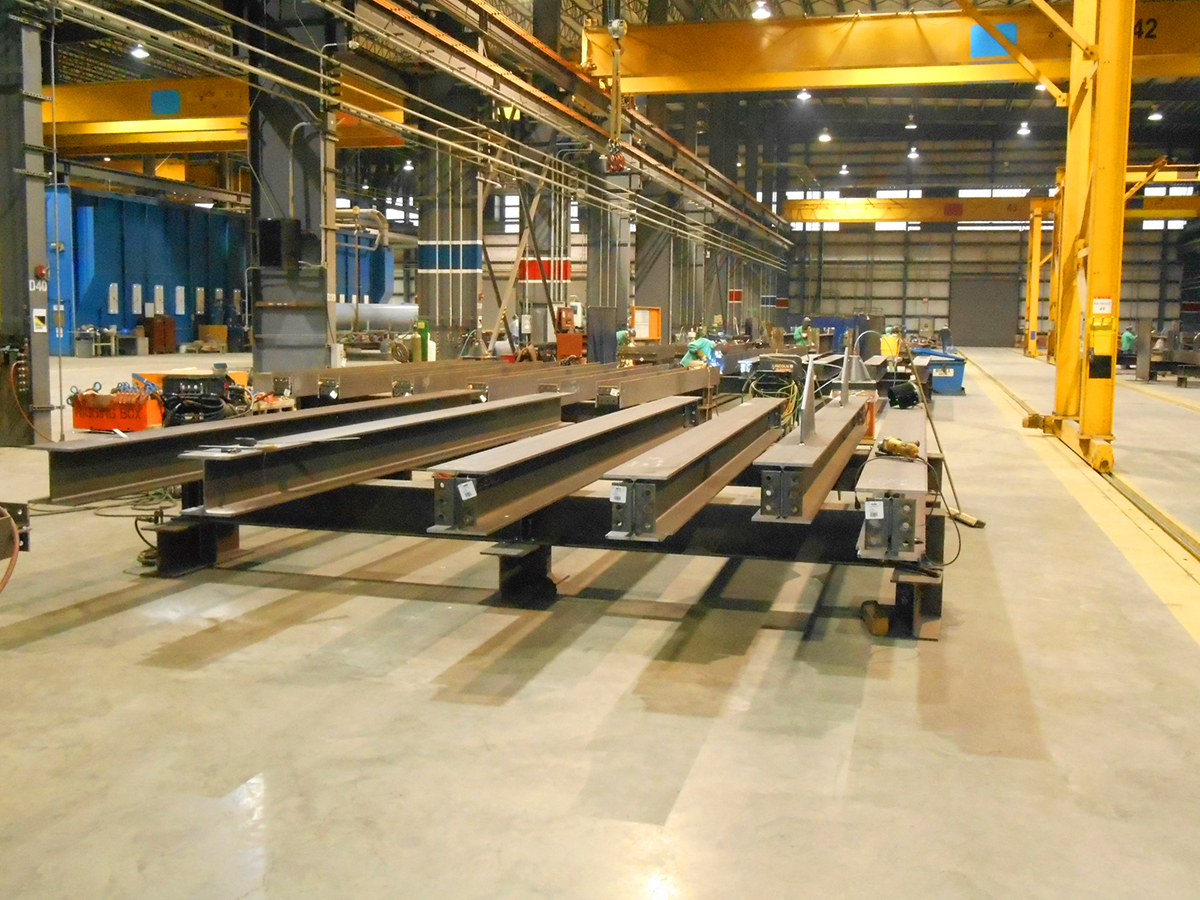Alpha Reo: Blazing A Trail in Reinforced Steel Solutions
Alpha Reo: Blazing A Trail in Reinforced Steel Solutions
Blog Article
Comprehensive Analysis of Cutting-Edge Techniques in Steel Fabrication Sector
As the steel construction market continues to advance, the integration of cutting-edge methods has actually come to be necessary for staying competitive and fulfilling the demands of modern production standards. In this vibrant market where modern technology plays a crucial function, comprehending the nuances of these advanced techniques is not simply a choice however a need for those looking to create in advance in the ever-evolving globe of steel manufacture.
Laser Cutting Advancements
In the world of steel manufacture, laser cutting innovations have actually revolutionized the precision and performance of steel shaping processes. By harnessing the power of concentrated laser beams, producers can now accomplish unmatched levels of accuracy when cutting via numerous kinds of metals. This innovation makes it possible for detailed layouts to be performed with marginal material waste, making it an affordable remedy for industries needing high precision elements.
One of the crucial advantages of laser cutting is its capacity to manage a wide variety of products, including stainless steel, light weight aluminum, and carbon steel, effortlessly. The procedure generates clean, burr-free sides, eliminating the demand for extra finishing steps. The non-contact nature of laser reducing minimizes the risk of material contamination, resulting in higher top quality end products.
Additionally, laser cutting equipments can be programmed to make swift, accurate cuts, considerably decreasing production time compared to standard cutting approaches. This rate and precision make laser reducing particularly suitable for mass production settings where performance is critical. As technology proceeds to advance, laser cutting is positioned to play a significantly crucial function in the steel manufacture sector.

CNC Machining Innovations
The development of CNC machining technologies has actually ushered in a brand-new era of precision and performance in the steel manufacture market. Computer System Numerical Control (CNC) equipments have actually revolutionized steel fabrication by supplying exceptional precision and repeatability in the manufacturing procedure. steel fixing. Among the key advancements in CNC machining is the assimilation of innovative software application systems that allow real-time monitoring and changes, leading to boosted productivity and quality assurance
Additionally, the development of multi-axis CNC machines has actually allowed for the manufacture of intricate steel components with intricate designs that were previously testing to produce. These makers can carry out a large range of machining procedures, consisting of milling, drilling, transforming, and grinding, all with high levels of accuracy.
Moreover, the incorporation of automation and robotics in CNC machining has structured manufacturing procedures, reduced preparations, and reduced the margin of error. This combination of sophisticated modern technologies not just increases efficiency but likewise ensures consistent quality throughout all made steel parts. To conclude, CNC machining advancements proceed to drive improvements in the steel manufacture industry, setting new standards for precision and productivity.
Automated Welding Technologies
Automated welding technologies have reinvented the steel construction market, boosting efficiency and precision in the welding process. These cutting-edge innovations use computer-controlled systems to automate the welding procedure, bring about greater performance degrees and boosted weld quality. One of the vital advantages of automated welding is the capability to perform complex welds with consistent accuracy, lowering the likelihood of mistakes and remodel.
Robotic welding systems are at the center of automated welding modern technologies, using unequaled speed and precision. These systems can manage a large range of welding jobs, from simple to complex, effortlessly (steel fabrication melbourne). By utilizing sophisticated sensing units and software, robot welders can adjust to variants in product and joint geometry, ensuring an uniform and reliable weld
In addition, automated welding technologies enhance office safety by lessening the exposure of human welders to hazardous fumes and extreme warm. As the steel fabrication sector remains to advance, including automated welding technologies will be vital for business seeking to remain affordable and meet the expanding needs for top notch welded items.
Robotics Assimilation in Construction
Making use of robotic systems in manufacture processes has actually become an essential strategy for boosting efficiency and precision in modern production environments. Robotics integration in steel construction uses a myriad of benefits, including enhanced productivity, enhanced quality assurance, and improved safety and security procedures. These innovative robotic systems are outfitted with sophisticated sensing units and programming abilities, enabling them to carry out complex tasks with a high level of precision and repeatability.
One of the essential advantages of robotics integration in steel construction is the ability to automate repeated tasks, such as product handling, reducing, welding, and setting up procedures. This not just speeds up manufacturing cycles however also decreases the risk of human error, resulting in higher general item high quality. Furthermore, robotics can run 24/7, substantially enhancing manufacturing outcome and meeting tight project deadlines.

3D Printing in Steel Manufacturing
Having reinvented the steel fabrication market via robotics integration, the expanding exploration of 3D printing in steel manufacturing is poised to more advance the realm of modern-day manufacturing methods. 3D printing, additionally called additive production, uses unmatched layout flexibility and complexity, allowing the creation of detailed steel structures that were formerly unattainable through traditional manufacturing techniques. By utilizing computer-aided design (CAD) software program, suppliers can precisely manage the layer-by-layer deposition of steel material, leading to parts with boosted functionalities and geometries.
Among the vital advantages of 3D printing in steel production is its ability to decrease material waste substantially. Unlike subtractive manufacturing processes where excess product is cut away, 3D printing just utilizes the needed amount of steel needed for the final component. This effectiveness not just causes set you back financial savings but additionally straightens with lasting production techniques by lessening environmental effect.
Furthermore, 3D printing makes it possible for quick prototyping and customization, enabling for the manufacturing of tiny sets of complex steel parts with short preparations. As the modern technology proceeds to develop and come to be a lot more easily accessible, its integration right into mainstream steel construction procedures is expected to drive technology and performance across the sector.
Verdict
To conclude, the steel manufacture market has seen significant innovations in strategies such as laser cutting, CNC machining, automated welding, robotics integration, and 3D printing. These advanced modern technologies have changed the means steel products are made, causing boosted cost-effectiveness, precision, and efficiency. Continued investment in these ingenious techniques is essential for the sector to stay competitive and fulfill the needs of contemporary production procedures.
As the steel fabrication market proceeds to progress, the assimilation of cutting-edge techniques has come to be necessary for remaining competitive and fulfilling the demands of modern-day manufacturing standards.One of the key advantages of laser cutting is its capacity to take care of a broad array of products, including stainless steel, light weight aluminum, and carbon steel, with ease.Automated welding innovations have actually changed the steel fabrication sector, enhancing efficiency and accuracy in the welding procedure.Having actually changed the steel steel fabricators melbourne fabrication sector with robotics assimilation, the growing expedition of 3D printing in steel manufacturing is positioned to further advance the realm of contemporary manufacturing methods.In conclusion, the steel fabrication sector has seen considerable advancements in strategies such as laser cutting, CNC machining, automated welding, robotics combination, and 3D printing.
Report this page